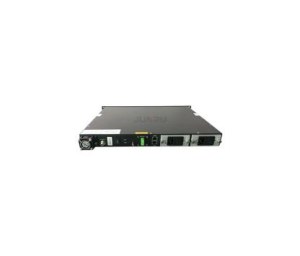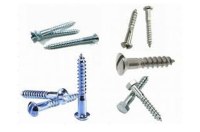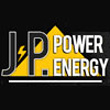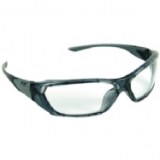FIBER OPTIC COMMUNICATION EQUIPMENT
Cantidad : 10000pcs/m
Introducing JUNPU Fiber Optic Communication Equipment, a comprehensive range of reliable and high-performance solutions for robust and efficient triple-play networks. Our advanced equipment includes fiber optic cables, splice closures, EDFA WDM, 1550 TX, and more, designed to meet the diverse needs of telecom, data centers, and networking sectors. Experience seamless connectivity, superior signal quality, and unparalleled reliability with JUNPU fiber optic communication equipment.
Optical Amplifier
The Optical Amplifier by JUNPU is a powerful and reliable device designed to boost the signal strength in fiber optic communications. It enhances performance in applications like telecommunications, data centers, and network infrastructures.
EDFA WDM PON
EDFA
1550 Optical Transmitter
The 1550 Optical Transmitter by JUNPU is an efficient and dependable tool designed to transmit high-quality signals in fiber optic communications. It excels in areas such as telecommunications, data centers, and network infrastructures, ensuring superior performance.
Internal Modulated CATV Optic Transmitter
External Modulated CATV Optic Transmitter
Mini Optical Node
The Mini Optical Node by JUNPU is a compact and robust device, engineered to receive and convert optical signals in fiber optic communications. It is ideal for use in telecommunications, data centers, and network infrastructures, delivering exceptional performance.
Passive Optical Receiver
Active Optical Receiver
Characteristics of Different Fiber Optic Communication Equipment
Fiber optic communication equipment is an integral part of modern communication networks. It enables the transmission of data over long distances at high speeds using optical fibers. Here are some key types and characteristics of fiber optic communication equipment:
1. Fiber Optic Cables: These cables consist of multiple strands of optical fibers enclosed in protective jackets. They come in various types, including single-mode and multi-mode, and have different characteristics such as bandwidth, attenuation, and fiber count.
2. Fiber Optic Connectors: These are used to join optical fibers, enabling the seamless transmission of data. Common types include SC, LC, and ST connectors, each with different characteristics in terms of size, insertion loss, and durability.
3. Fiber Optic Transceivers: These devices are responsible for converting electrical signals into optical signals and vice versa. They include modules such as SFP, SFP+, QSFP, and XFP, which vary in data rates, transmission distances, and form factors.
4. Fiber Optic Switches: These optical communication devices enable the routing and switching of optical signals in a network. They provide flexibility and control to manage the flow of data, with features such as port counts, switching capacity, and support for various protocols.
5. Optical Power Meters: These meters are used to measure optical power in fiber optic systems. They help ensure proper signal strength and monitor the performance of optical links.
6. Optical Time-Domain Reflectometers (OTDR): These instruments are used for testing and troubleshooting fiber optic networks. They provide information about the quality of the optical link, including fiber loss, splices, and connectors.
7. Fiber Optic Splitters: These devices split optical signals into multiple pathways, allowing for signal distribution to multiple locations. They come in various configurations such as PLC (Planar Lightwave Circuit) and FBT (Fused Biconical Taper), with different splitting ratios and insertion loss.
In summary, fiber optic communication equipment includes cables, connectors, transceivers, switches, power meters, OTDRs, and splitters. Each type of equipment has unique characteristics that contribute to the efficient transmission, control, and management of data in fiber optic networks.
Deployment and Installation of Fiber Optic Communication Equipment
1. Pre-installation planning: Discuss the importance of pre-installation planning when deploying fiber optic communication equipment. Explore considerations such as site surveys, understanding network requirements, assessing cable routing options, and determining equipment placement locations.
2. Cable installation: Explain the process of cable installation for fiber optic communication equipment. Discuss techniques for pulling or blowing fiber optic cables, ensuring proper cable management, and avoiding any sharp bends or excessive tension that could degrade signal quality.
3. Connector termination: Detail the steps involved in connector termination during fiber optic equipment installation. Discuss different connector types, such as SC, LC, or ST, and explain the process of stripping and cleaving fiber ends, epoxy application, and the use of polishing and inspection tools for achieving reliable and low-loss connections.
4. Splicing and fusion: Describe the splicing and fusion process required for connecting fiber optic cables in certain installations. Explain the use of fusion splicers, the importance of proper alignment, heat-shrink tubing, and ensuring minimal signal loss when creating seamless connections between fiber strands.
5. Testing and verification: Discuss the importance of testing and verifying the installed fiber optic communication equipment. Explain the use of power meters, optical time-domain reflectometers (OTDR), and other testing tools to measure optical power, loss, and identify any faults or anomalies within the installed network.
Proper deployment and installation of fiber optic communication equipment is crucial for ensuring reliable and efficient data transmission. By addressing pre-installation planning, cable installation, connector termination, splicing and fusion, and thorough testing and verification, network operators can achieve optimal performance and minimize the risk of connectivity issues. Professional training and adherence to industry best practices are recommended for successful deployment and installation of fiber optic communication equipment.
Fiber Optic Communication Equipment in Data Centers
Fiber optic communication equipment is essential in data centers for maintaining efficient and reliable data transmission. Here are five key points about fiber optic communication equipment in data centers:
1. High Bandwidth:relative"font-size:12.0000px">2. Low Latency: Data centers require low latency to process and transfer data quickly and efficiently. Fiber optic communication equipment has low signal losses and provides faster data transmission speeds, resulting in reduced latency and improved performance.
3. Long-Distance Transmission: Fiber optic cables can transmit data over long distances without any loss of signal quality. This makes them ideal for connecting different sections or remote locations within a data center, ensuring seamless communication and data exchange.
4. Scalability: Data centers often need to accommodate the growing demand for data storage and processing. Fiber optic communication equipment offers scalability, allowing for easy expansion and upgrading of the network infrastructure without significant disruption.
5. Enhanced Reliability: Fiber optic cables are immune to electromagnetic interference, such as those caused by power lines or nearby electronic devices. Additionally, they are not susceptible to corrosion, which can degrade the performance of copper cables. These factors make fiber optic communication equipment more reliable and less prone to signal degradation or interruptions.
In summary, fiber optic communication equipment plays a critical role in data centers by providing high bandwidth, low latency, long-distance transmission, scalability, and enhanced reliability. Its deployment ensures efficient and smooth data transfer, contributing to the overall performance and effectiveness of data centers.
As a ftth box manufacturer, we will do our best to meet all the needs of customers.
Persona a contactar : JUNPU JUNPU, +18 8 68 80 71 26
Buen trato: comprar del vendedor
Por favor, lea nuestras condiciones de uso. También puede visitar nuestras preguntas frecuentes y ver nuestra información sobre los riesgos relacionados con la falsificación.
|
Esta página es acerca de los importadores y exportadores de FIBER OPTIC COMMUNICATION EQUIPMENT Buscar en la categoria : Informática Buscar en la categoria : communication, equipment, fiber, optic |
Tuesday 06 January 2026
Cantidad : 100,000 pc
JBI is one of the leading professional screw suppliers in Taiwan and specialized in manufacturing screws, bolts, nuts, washers, fittings, springs, and other hardware. All our products are produced according to the IFI, DIN, ISO International standard specification. Our fasteners...
Jeng Bright International Corporation
- jbitwco
- 830 - Kaohsiung City
- +88 6 77 02 10 77
Wednesday 22 October 2014
Estimado JP POTENCIA ENERGÉTICA ofrece desmontaje y redimir sus grupos electrógenos, motores industriales de todas las marcas y todos los poderes. Usted puede devolver su equipo en el estado y sin garantía, el desmontaje completo es apoyado por nuestros técnicos. No dude en...
JP Power Energy
- 93110 - rosny sous bois
- 01 48 94 92 21
- 06 77 21 22 04
Wednesday 28 August 2013
Cantidad : 20 - Precio : 8,50 €
- Lente en policarbonato incoloro inyectado en la montura - Montura en poliuretano elastico y flexible para un ajuste universal para todos los tamaños de cara - Muy resistente: amortigua y absorbe los impactos - Patillas en caucho para un mayor confor y sujeción - Supera...
Fastocks Europe, S.L.
- 46015 - Valencia
- 902099937










